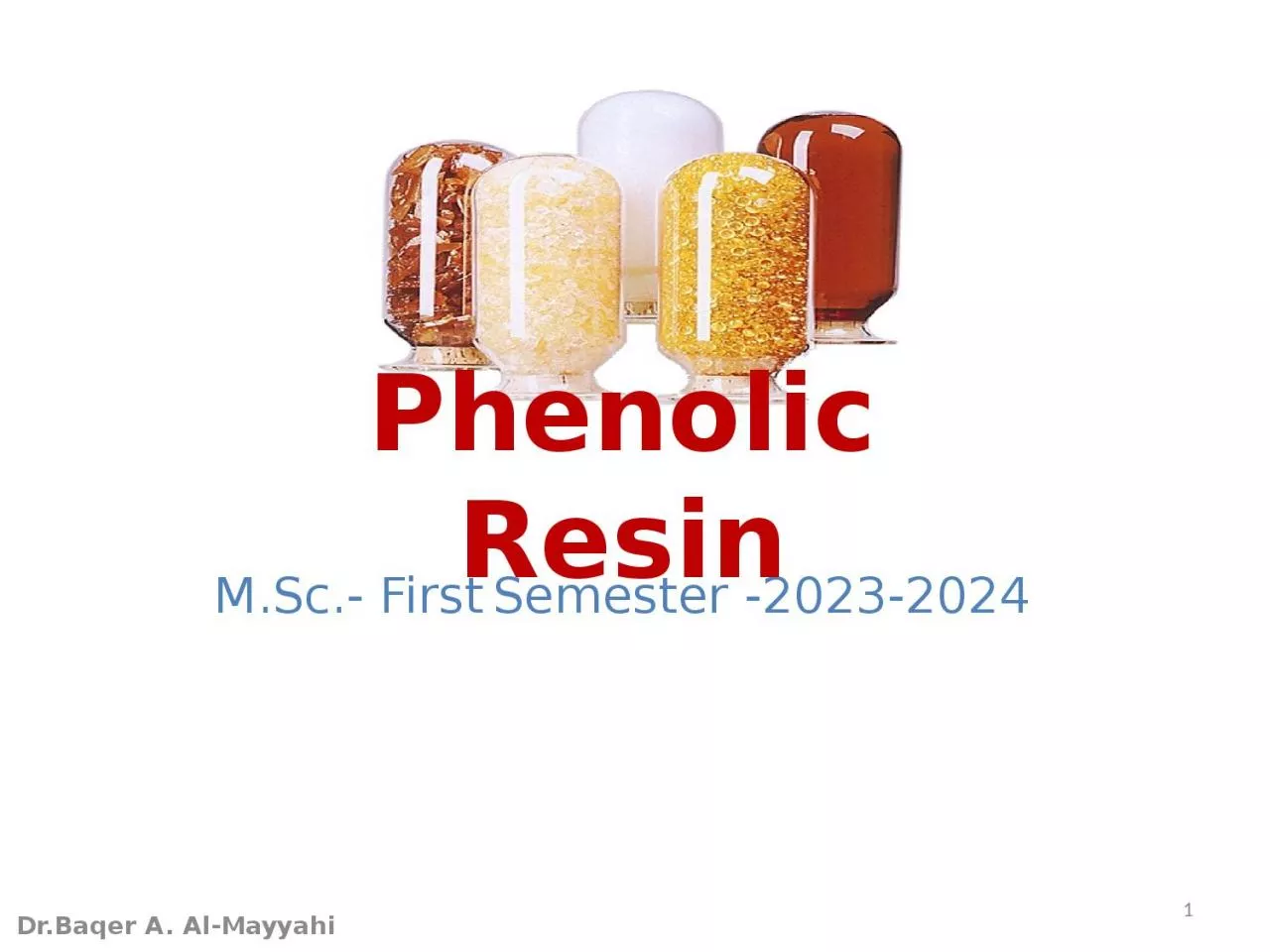PPT-M.Sc.- First Semester -2023-2024
Author : eleanor | Published Date : 2024-03-15
DrBaqer A AlMayyahi 1 Phenolic Resin Introduction Phenolic resins are obtained by the reaction of phenols with aldehydes Both parent compounds phenol and formaldehyde
Presentation Embed Code
Download Presentation
Download Presentation The PPT/PDF document "M.Sc.- First Semester -2023-2024" is the property of its rightful owner. Permission is granted to download and print the materials on this website for personal, non-commercial use only, and to display it on your personal computer provided you do not modify the materials and that you retain all copyright notices contained in the materials. By downloading content from our website, you accept the terms of this agreement.
M.Sc.- First Semester -2023-2024: Transcript
Download Rules Of Document
"M.Sc.- First Semester -2023-2024"The content belongs to its owner. You may download and print it for personal use, without modification, and keep all copyright notices. By downloading, you agree to these terms.
Related Documents





![[FREE]-2023-2024 Pocket Calendar: 24-Month Monthly Planner 2-Year Agenda Schedule Organizer](https://thumbs.docslides.com/974468/free-2023-2024-pocket-calendar-24-month-monthly-planner-2-year-agenda-schedule-organizer-logbook-appointment-book-small-size-amazing-quality-cover-2023-december-2024-new-year-s-gift.jpg)
![[FREE]-2023-2027 Five Year Monthly Planner- Make It Happen Today: (Years 2023,2024,2025,2026,2027](https://thumbs.docslides.com/975741/free-2023-2027-five-year-monthly-planner-make-it-happen-today-years-2023-2024-2025-2026-2027-january-2023-december-2027-640ab0dc2f2a5.jpg)
![[FREE]-2023-2027 Monthly Planner 5 Years- Dream It, Believe It, Achieve It: (Years 2023,2024,2025,2026,2027](https://thumbs.docslides.com/992173/free-2023-2027-monthly-planner-5-years-dream-it-believe-it-achieve-it-years-2023-2024-2025-2026-2027-january-2023-december-2027.jpg)
![[BEST]-2023-2027 Five Year Monthly Planner- Make It Happen Today: (Years 2023,2024,2025,2026,2027](https://thumbs.docslides.com/992182/best-2023-2027-five-year-monthly-planner-make-it-happen-today-years-2023-2024-2025-2026-2027-january-2023-december-2027.jpg)
![[READ] TEACHER LESSON PLANNER 2023-2024: Lesson Plan Grade and Record Books for Teachers](https://thumbs.docslides.com/1004955/read-teacher-lesson-planner-2023-2024-lesson-plan-grade-and-record-books-for-teachers-january-2023-june-2024-monthly-and-weekly-class-organizer-flowers-cover.jpg)
![[EBOOK] ASVAB Study Guide 2023-2024: ASVAB Prep Book 2023 -2024 with Practice Tests, Videos](https://thumbs.docslides.com/1005783/ebook-asvab-study-guide-2023-2024-asvab-prep-book-2023-2024-with-practice-tests-videos-online-proven-strategies-to-ace-your-exam.jpg)



